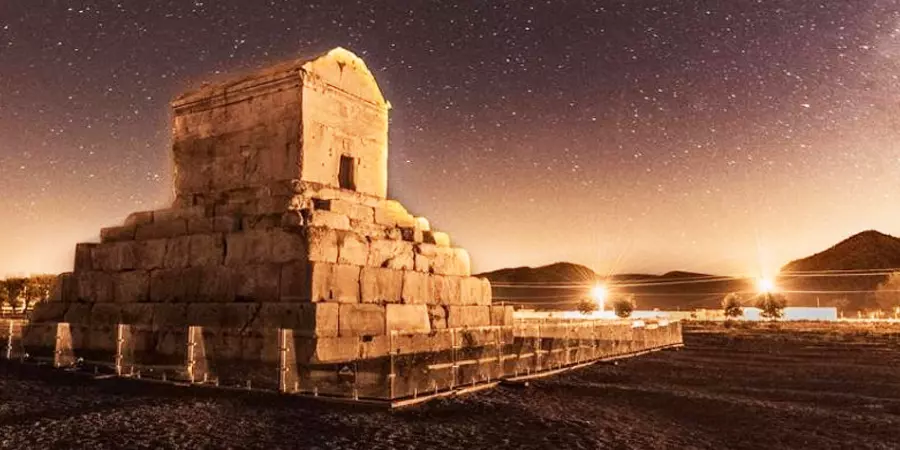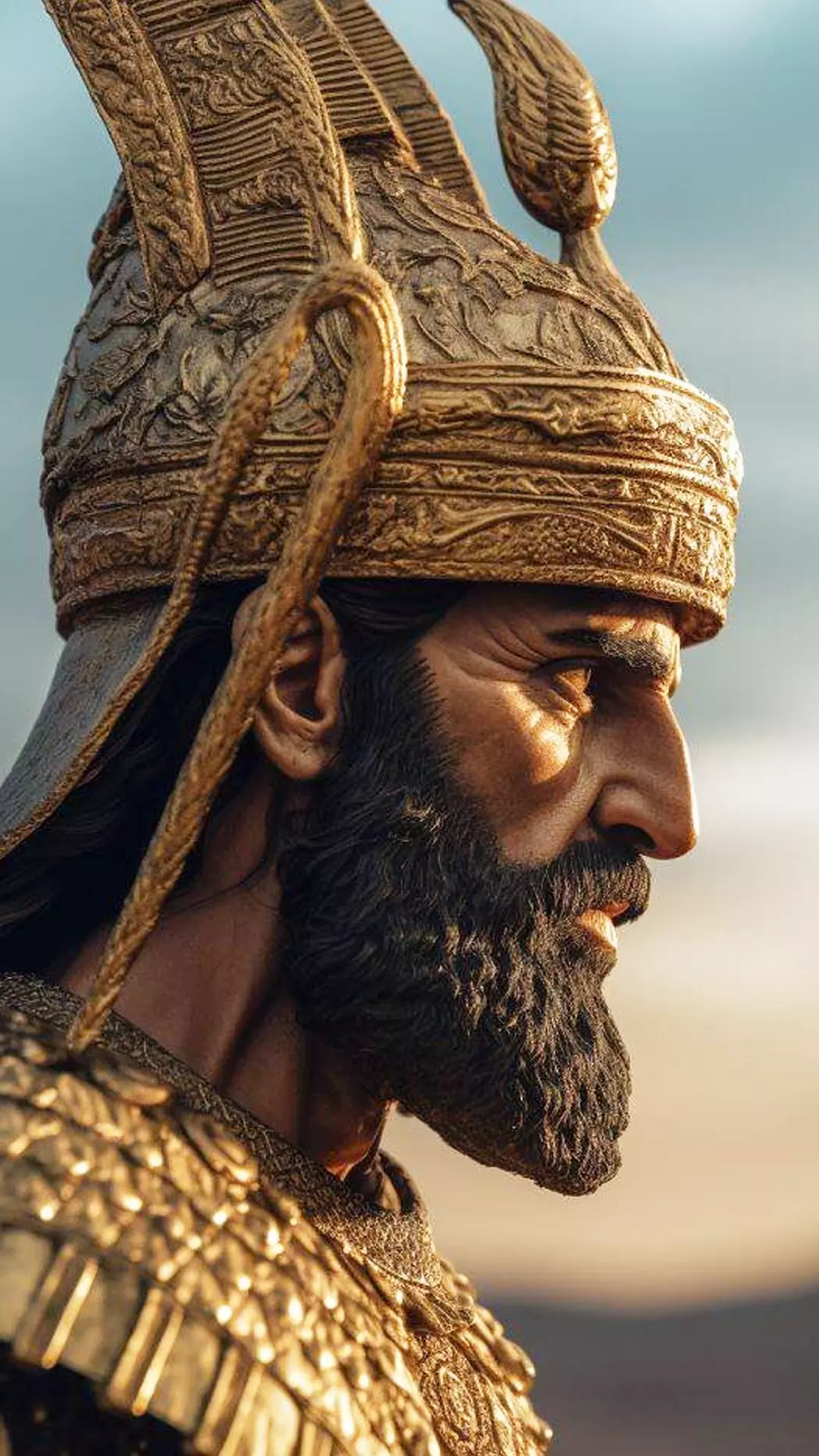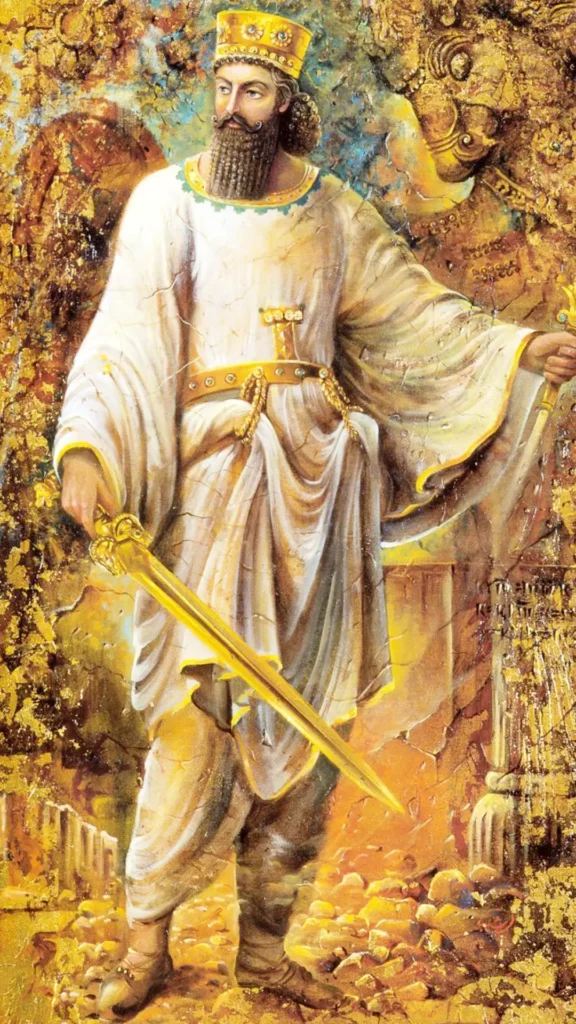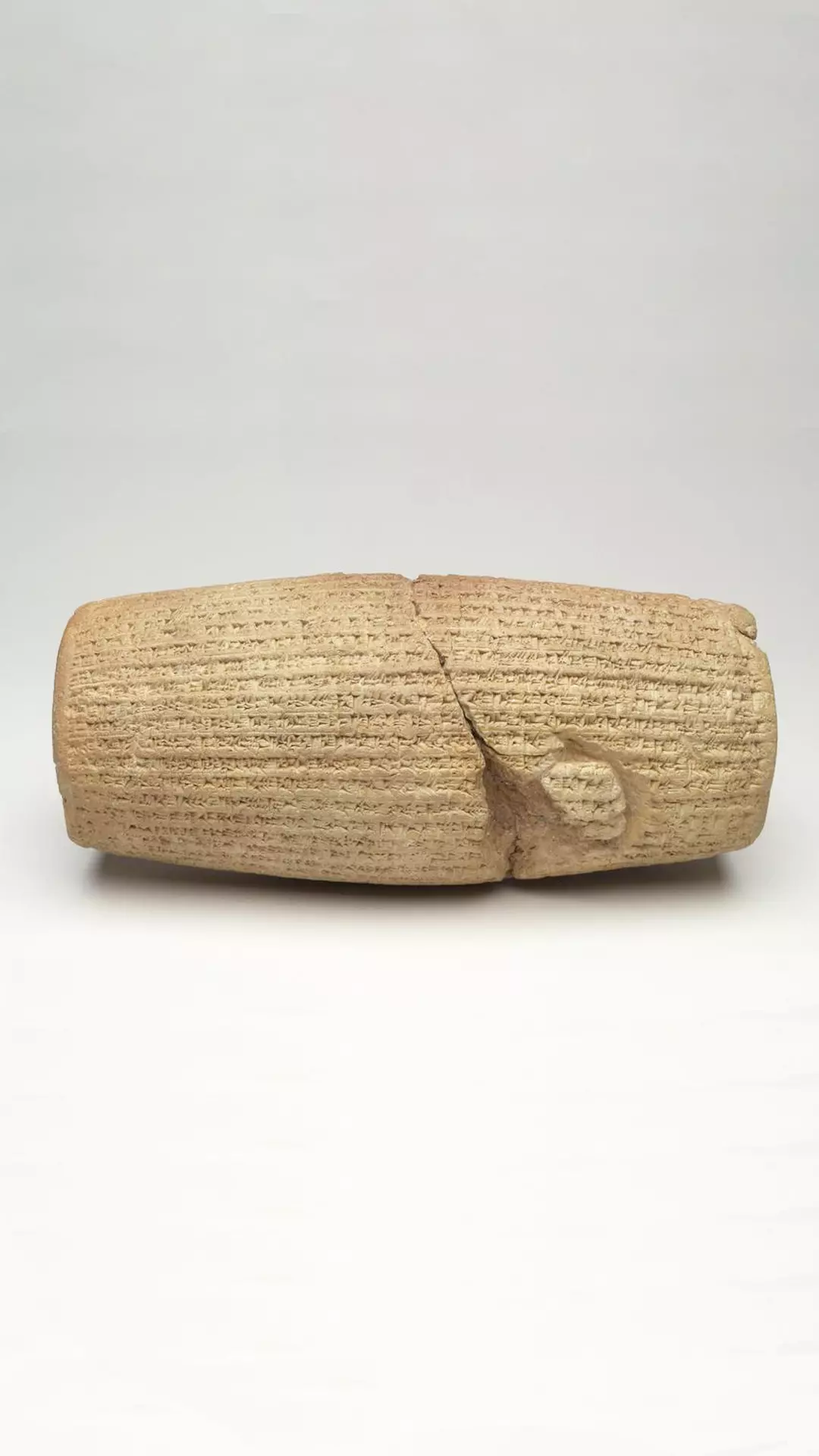cyrus the great history
Cyrus the Great, also known as Cyrus II, was a Persian king who founded the Achaemenid Empire, one of the most significant empires in ancient history. He ruled from 559 to 530 BCE, and his reign marked a pivotal moment in the history of the ancient Near East. Here’s an overview of his life and achievements:
- Early Life: Cyrus was born around 590 BCE in Anshan, a region in present-day southwestern Iran. He was born into the Achaemenid family, which was a vassal of the Median Empire.
- Rise to Power: In 559 BCE, Cyrus rebelled against the Median king, Astyages, and successfully overthrew him. This marked the beginning of his rule as the king of the Persians and Medes, effectively founding the Achaemenid Empire.
- Tolerance and Wisdom: Cyrus is often remembered for his benevolent and tolerant rule. He allowed conquered peoples to retain their customs, languages, and religions, earning him a reputation as a wise and just ruler. This policy of religious and cultural tolerance was enshrined in the famous Cyrus Cylinder, an ancient clay cylinder considered one of the earliest declarations of human rights.
- Conquests: Under Cyrus’s leadership, the Achaemenid Empire expanded rapidly. He conquered the neighboring kingdoms of Lydia, Babylon, and Elam, among others, which extended his dominion from Asia Minor to Mesopotamia and beyond.
- Death and Legacy: Cyrus the Great died in 530 BCE, and he was succeeded by his son, Cambyses II. Cyrus’s legacy continued under his successors, most notably under Darius I, who further expanded and organized the empire. The Achaemenid Empire became one of the largest and most influential empires in the ancient world, known for its impressive infrastructure, including the Royal Road and the construction of Persepolis.
- Cultural Impact: Cyrus’s legacy extended beyond his empire. He is mentioned in various historical texts and is portrayed positively in the Bible, where he is credited with allowing the Jews to return to their homeland and rebuild their temple in Jerusalem.
- Historical Significance: Cyrus is considered a pivotal figure in world history, as his empire laid the foundation for the later conquests of Alexander the Great and the spread of Hellenistic culture. Additionally, his principles of governance and tolerance have influenced later leaders and empires throughout history.
he is remembered not only for his military conquests but also for his enlightened approach to governance, which set a precedent for future rulers in terms of respecting the rights and cultures of diverse populations within a vast empire.

cyrus the great religion
known as Cyrus II, was the founder of the Achaemenid Empire and ruled from 559 to 530 BCE. He is known for his tolerance of various religions and is often credited with promoting religious freedom within his empire.
Cyrus the Great followed the religion of Zoroastrianism, which was one of the prominent faiths in ancient Persia. However, he was known for his policy of religious tolerance, and he allowed his subjects to practice their own religions freely. This is famously documented in the Cyrus Cylinder, an ancient clay cylinder that bears an inscription in which Cyrus proclaims his respect for the rights and customs of various religious groups, including the Jews.
Cyrus’s approach to religion was relatively inclusive and allowed the diverse people within his empire to worship their deities and follow their faiths without fear of persecution. This policy of religious tolerance was one of the defining features of his reign and contributed to the stability and longevity of the Achaemenid Empire.
how cyrus the great die?
The exact circumstances of Cyrus the Great’s death are not entirely clear, and historical accounts vary. The most widely accepted account comes from ancient Greek historian Herodotus. According to Herodotus, Cyrus died in 530 BCE during a military campaign against the Massagetae, a nomadic people in Central Asia.
In a battle against the Massagetae led by their queen, Tomyris, Cyrus was killed. The specifics of his death differ in various accounts. Herodotus writes that Cyrus was taken prisoner by Tomyris after a fierce battle and was later killed, possibly through a form of execution or in combat. Tomyris is said to have sought revenge for her son, whom Cyrus had captured and killed earlier.
While Herodotus’ account is the most famous, other ancient historians provide different versions of Cyrus’s death. Some suggest he died of natural causes, while others claim he was assassinated. Due to the passage of time and variations in historical accounts, the exact circumstances of Cyrus’s death remain a subject of debate among scholars and historians.



what was cyrus the great know for?
- Founding the Achaemenid Empire: Cyrus is renowned for founding the Achaemenid Empire, one of the largest and most influential empires in ancient history. Under his leadership, he expanded the empire’s borders and established the foundation for its future success.
- Religious Tolerance: Cyrus is celebrated for his policy of religious tolerance. He allowed the diverse peoples within his empire to practice their own religions and customs freely, setting an example of religious inclusivity and respect.
- Cyrus Cylinder: The Cyrus Cylinder, an ancient clay cylinder bearing an inscription, is considered one of the earliest documents advocating for human rights and religious freedom. It contains a declaration of Cyrus’s respect for the rights of various religious groups and has been hailed as a symbol of tolerance and justice.
- Conquest of Babylon: Cyrus’s conquest of Babylon in 539 BCE is a notable military achievement. This event is described in the Bible and other historical texts, where he is depicted as a liberator who allowed the Jewish people to return to their homeland and rebuild the Temple of Jerusalem.
- Administrative Reforms: Cyrus introduced administrative reforms that helped govern his vast empire efficiently. His policies included a standardized currency system, a postal service, and a network of roads, all of which facilitated trade and communication within the empire.
- Legacy of Leadership: Cyrus is often considered a model of a benevolent and enlightened ruler. His leadership style emphasized fairness, justice, and respect for cultural diversity, leaving a legacy of good governance and diplomacy.
Cyrus the Great is remembered not only for his military conquests but also for his principles of religious tolerance and humane governance, which have earned him a place in history as a significant and influential figure.
who defeated cyrus the great in Battle?
the founder of the Achaemenid Empire, was defeated and killed in battle by the Massagetae, a nomadic people from Central Asia. The Massagetae were led by their queen, Tomyris. This battle took place around 530 BCE during one of Cyrus’s military campaigns to expand his empire into Central Asia.
The exact details of the battle and Cyrus’s death vary in historical accounts, but it is generally believed that he met his demise in this conflict. According to Herodotus, an ancient Greek historian, Cyrus was captured by the Massagetae and later killed, possibly through execution or in combat, as Tomyris sought revenge for the death of her son. Other historical accounts provide slightly different versions of his death, but the defeat at the hands of the Massagetae marks the end of Cyrus the Great’s reign.

cyrus the great human rights
he was often associated with an early form of recognition for human rights due to his famous Cylinder, known as the Cyrus Cylinder, and his policies of religious tolerance and fairness during his rule. The Cyrus Cylinder, which dates back to the 6th century BCE, is considered one of the earliest known declarations of human rights. In this inscription, Cyrus is depicted as a benevolent ruler who allowed conquered peoples, including the Jews, to return to their homelands and rebuild their temples. The text emphasizes the importance of freedom of worship and highlights Cyrus’s commitment to respecting the rights and customs of diverse religious groups within his empire.
Cyrus’s policies of religious tolerance, which extended to all his subjects, regardless of their faith, are seen as an early example of religious freedom and human rights. He promoted the idea of equal treatment under the law and allowed different cultures and religions to coexist peacefully within his vast empire. This approach to governance contributed to the stability and prosperity of the Achaemenid Empire during his reign.
While the concept of human rights as we understand it today had not fully developed in Cyrus’s time, his actions and principles regarding tolerance, respect for cultural diversity, and religious freedom have earned him recognition as a historical figure associated with early human rights principles.

cyrus the great tomb
The tomb is an important historical and archaeological site located in Pasargadae, shiraz, Iran. Cyrus the Great, the founder of the Achaemenid Empire, was buried there after his death in 530 BCE. Here is some information about his tomb:
- Location: The tomb is situated in Pasargadae, which is about 50 kilometers (31 miles) north of Persepolis, another ancient Achaemenid capital.
- Architecture: The tomb itself is a simple but impressive structure. It consists of a rectangular stone chamber with a gabled roof and no elaborate decorations. The tomb’s design reflects the Achaemenid architectural style, which was characterized by its simplicity and focus on grandeur through scale and proportions.
- Inscriptions: An inscription on the tomb, written in Old Persian cuneiform, reads: “I am Cyrus the king, an Achaemenian.” This inscription is considered one of the earliest examples of a royal inscription in the history of Persia.
- Significance: The tomb of Cyrus the Great is significant not only for its historical and architectural value but also for its cultural and symbolic importance. Cyrus is remembered for his enlightened rule and respect for the rights and customs of different peoples, as demonstrated in the famous Cyrus Cylinder. His tomb is a symbol of this legacy.
- Pilgrimage Site: Over the centuries, Cyrus’s tomb has been a site of pilgrimage and reverence for many Iranians. It holds a special place in the hearts of Iranians as a reminder of their ancient heritage.
- Restoration and Preservation: Efforts have been made to restore and preserve the tomb, ensuring that it remains accessible to visitors and future generations. Conservation work has been carried out to protect the site from deterioration.
his tomb is not only an archaeological treasure but also a testament to the enduring legacy of a ruler known for his wisdom, tolerance, and contributions to Persian and world history. It stands as a reminder of the Achaemenid Empire’s cultural and historical significance.

cyrus the great in bible
Cyrus the Great is mentioned in the Bible, specifically in the Old Testament. His mention in the Bible is significant because it relates to his role in the history of the Jewish people. The most notable reference to Cyrus can be found in the Book of Ezra and the Book of Isaiah:
- Book of Ezra: In the Book of Ezra, Cyrus is mentioned in the context of the Babylonian Captivity of the Jewish people. According to the Bible, after the conquest of Babylon by Cyrus and the Persians, he issued a decree allowing the Jewish exiles to return to their homeland and rebuild their temple in Jerusalem. This decree is often referred to as the “Cyrus Decree” or “Cyrus Cylinder,” and it is considered a pivotal moment in Jewish history, as it facilitated the return of the Jews to Jerusalem and the reconstruction of their religious center.
- Book of Isaiah: The Book of Isaiah contains a prophecy regarding Cyrus, which is found in Isaiah 45:1-7. In this passage, Cyrus is referred to as the “anointed one” or “messiah” of the Lord, even though he was not Jewish. The text suggests that God chose Cyrus to conquer Babylon and release the Jewish captives, emphasizing God’s sovereignty over worldly rulers.
Here is an excerpt from Isaiah 45:1-4 (NIV):
“This is what the Lord says to his anointed, to Cyrus, whose right hand I take hold of to subdue nations before him and to strip kings of their armor, to open doors before him so that gates will not be shut: I will go before you and will level the mountains; I will break down gates of bronze and cut through bars of iron.”

These biblical references to Cyrus highlight his role as a ruler chosen by God to facilitate the return of the Jewish exiles to their homeland and the restoration of their religious practices. As a result, Cyrus is viewed positively in Jewish history and is remembered for his role in enabling the rebuilding of the Jewish Temple in Jerusalem.
cyrus the great vs alexander the great
they were two of the most influential figures in ancient history, but they lived in different time periods and had distinct accomplishments and legacies. Here’s a comparison of these two remarkable leaders:
Cyrus the Great:
- Time Period: lived in the 6th century BCE, from around 590 to 530 BCE.
- Founder of the Achaemenid Empire: Cyrus is primarily known for founding the Achaemenid Empire, which became one of the largest and most significant empires of the ancient world.
- Conquests: He expanded his empire through military conquests, including the subjugation of the Median Empire, the conquest of Lydia, Babylon, and other territories in Asia Minor and the Middle East.
- Governance: Cyrus is renowned for his enlightened approach to governance. He practiced religious and cultural tolerance, allowing conquered peoples to retain their customs and religions. This policy is famously documented in the Cyrus Cylinder, which is considered one of the earliest declarations of human rights.
- Legacy: Cyrus the Great is remembered for his benevolent rule and his contributions to Persian culture and administration. His legacy includes the establishment of a vast empire and a commitment to respecting the rights and traditions of diverse populations.
Alexander the Great:
- Time Period: Alexander the Great lived in the 4th century BCE, from 356 to 323 BCE.
- Conqueror of the Known World: Alexander is known for his remarkable military conquests, which extended the Macedonian Empire to include much of the known world, from Greece to Egypt, Persia, and even parts of India.
- Military Strategy: He was a brilliant military strategist and leader, known for his daring and innovative tactics, as well as his ability to inspire his troops.
- Legacy: Alexander’s conquests had a profound and lasting impact on the world. His empire, while short-lived after his death, created a cultural fusion known as the Hellenistic era, which spread Greek culture, art, and ideas throughout the lands he conquered.
- Enduring Influence: Alexander’s legacy continued long after his death, as Hellenistic culture played a significant role in shaping the Eastern Mediterranean and beyond for centuries. His military strategies and leadership qualities have been studied and admired by leaders throughout history.
In summary, while Cyrus the Great is remembered for founding the Achaemenid Empire and his policy of tolerance, Alexander the Great is known for his unparalleled military conquests and the spread of Hellenistic culture. Both are celebrated figures in history, each with their own distinct contributions and legacies.
cyrus the great height
There is no precise historical record of Cyrus’s height. Ancient texts and inscriptions typically do not provide such specific physical details about historical figures. Cyrus is remembered for his accomplishments as a ruler and military leader, as well as his contributions to the ancient world, rather than his physical attributes. As a result, his height remains a matter of historical speculation and is not a well-documented aspect of his life.
We hope you enjoyed reading this article and found it useful. Dear friends, you can contact us for more information through the communication channels available on the Travel2persia website.

Who was Cyrus the Great?
Cyrus the Great, also known as Cyrus II, was an ancient Persian king who founded the Achaemenid Empire and ruled from 559 to 530 BCE. He is celebrated for his achievements as a ruler and his legacy of tolerance and enlightened governance.
Where was Cyrus the Great born?
Cyrus was born in Anshan, a region in present-day southwestern Iran. His birthplace played a crucial role in the early history of the Persian Empire.
Is there a tomb of Cyrus the Great?
Yes, there is a tomb attributed to him in Pasargadae, Iran. It is a simple but historically significant structure and is considered a symbol of his legacy.
What were Cyrus’s notable conquests?
Cyrus conducted several military campaigns, including the conquest of the Median Empire, the defeat of the Lydian king Croesus, and the capture of Babylon. His conquests extended his empire from Asia Minor to Mesopotamia.




No comment